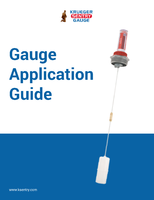What Is Standard Set-Up Data for Revalidation of Injection Molding Processes?
Traditional Revalidation
In order to revalidate a mold to run in a different injection molding machine, traditional revalidation follows closely to the initial process validation procedures which include IQ, OQ and PQ.
Installation (IQ): The process equipment along with all supporting and subsystems conform to the requirements of the manufacturer and are installed properly. The molds are validated for their ability to create parts that adhere to strict dimensional, economical and performance necessities. Once installation and design specifications are met which can repeatedly produce parts that perform up to standard the process validation can continue to OQ.
Operational Qualification (OQ): This tests the mold to ensure it operates as expected and gauges the conditions under which it will continue to do so. Test runs will determine the highest, lowest and nominal operating processes by varying the pressures, temperatures, velocities and other factors. Factors considered include the process control limits, raw material specifications, requirements for handling the materials, training and short term stability and capability. In revalidation, while many of the processing conditions from the original press are referenced this is done from scratch.
Performance Qualification (PQ):Â The equipment will run several cycles in the real manufacturing process to verify that the injection molding process is capable of consistently producing quality products at a range of operating conditions established during the OQ.
The OQ and PQ portions of the revalidation involve time and cost. "The PQ parts can be used for production if the revalidation is approved but if it fails these parts have to be scrapped, sorted or reworked and the revalidation process starts over."
Revalidation Using Standard Set-Up Sheets
This difference begins with the IQ, where the suitability of the press for the given mold is analyzed. Like shot size, clamp should be adjusted, distance between tie bars evaluated, fill speed to match the molds fill time requirement, load sensitivity and pressure response time needs to be set, material dryer should have appropriate residence time and the mold temperature controller should have sufficient volumetric flow to ensure cooling.
By considering these factors as part of the IQ the potential for successful transfer of the original process greatly improves.
As stated by Bob Reese, "During the OQ the original process is matched in terms of the Four Plastics Variables instead of trying to build a new process. The concept is if the Melt Temperature, Flow Rate, Plastic Pressure and Cooling Rate are matched the same part will be produced. This is usually much quicker and results in parts that more closely match the original process. And since the original process is matched the need for a full OQ is eliminated. The original process can be duplicated so the original OQ can be utilized. These reduces the time and cost of revalidation."
How it Works Matching the Four Plastics Variables
Melt Temperature: this is the temperature the resin is delivered into the mold from the injection molding machine.  The way to measure the melt temperature is using a calibrated melt probe. "Using the melt temperature form the original process validation, the barrel temperature setting on the new press can be adjusted to match the melt temperature," states Reese.
Flow Rate: the rate the material is injected in the mold. Inject until the cavity is 95 to 99% full, at this point transfer to pack and hold using machine position transfer. This is the established flow rate. The established fill time for this validated process does not change.
Plastic Pressure: after filling the mold with resin and adding for shrinkage, this is the pressure needed to pack out the part. "Matching the plastic pressure inside the barrel usually is sufficient, on hydraulic presses the plastic pressure must be converted from the hydraulic pressure", states Reese.
Cooling Rate/Time: cooling rate is the difference between melt temperature and mold temperature. The mold temperature is established using the material manufactures recommended ranges and the customers working temperature part. Fine tuning is directly related to the customer’s expectations of part appearance, size and desired properties, once this temperature is established and documented on the standard set-up sheet, it can be used from press to press.
The standard set-up sheet utilizes the Four Plastic variables for process validation so that revalidation can reduce cost, time and ensure part quality when moving a mold from one press to another.




